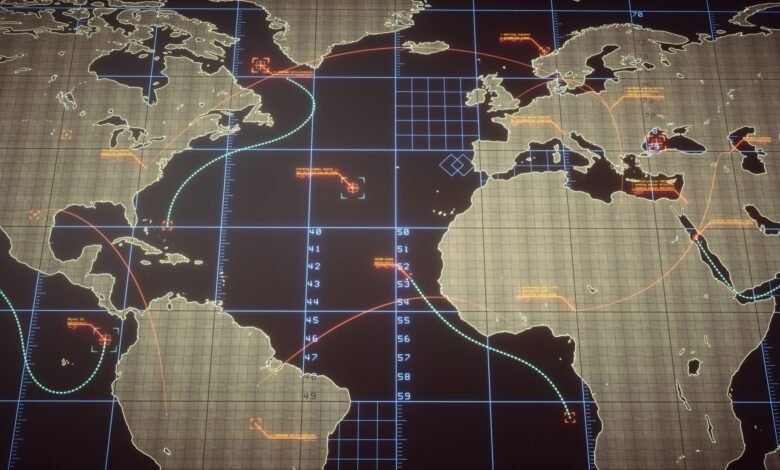Fighting the fog of war with data and AI

Morgan Wright, Chief Security Advisor at SentinelOne, walks us through fighting the fog of war with data and AI in this U.S. defense special focus
The United States Department of Defense (DoD) is a big organisation encompassing several branches and functions of the armed services. These include logistics, finance, healthcare, research and development, testing and evaluation, operations and maintenance, construction, etc..
The DoD’s mission is to provide the military forces required to deter war and ensure national security. To support nearly 2.1 million military personnel and 778,000 civilians, the DoD requires a budget of $850 billion for the current fiscal year.
This article discusses the impact of data analytics, AI, and other decision-support technologies on the United States Army – the largest and oldest branch of the military. By focusing on the Army, we can gain a clearer view of how these technologies will shape the future of warfare.
Decision-making and the Common Operational Picture
Every individual in the Army is involved in decision- making, whether at the strategic, operational, or tactical levels. Strategic decisions may require a large amount of data over time – generally months to years. Wars are usually won or lost at this level. At the operational level, the time frame is considered to be weeks to months. Military campaigns and operations occur here. At the tactical level, decisions are made in seconds, minutes, and hours.
A pivotal concept is the Common Operational Picture (COP). This dynamic representation of the battlefield serves as a real-time information source for commanders, aiding in their decision-making. The COP is a prime illustration of how data analytics are employed in the Army, as it involves running estimates and obtaining statuses across all warfighting functions. However, its effectiveness depends on the accuracy and timeliness of the data it receives.
Translating data into action
The Army Vantage program is not just an analytics platform but a catalyst for data-driven decision-making across the Army. By harnessing the power of artificial intelligence (AI) and machine learning (ML), the Army can transform vast amounts of data into actionable intelligence, supporting decision-making at all levels, from strategic planning to tactical execution.
Not all of Vantage’s functions relate to military engagements. Some include monitoring the health of all soldiers, down to the company level, so that the leadership can evaluate force readiness instantly across the globe. The current level of equipment preparedness is another crucial factor Vantage tracks.
Vantage ultimately leads to data-driven decision-making, especially for operational and tactical needs. Combatant commanders, in the thick of the battle, don’t have time to wait for a PowerPoint or planning document that might take an hour to create. The ability to view a dashboard and pick up a phone may be the only solution. Wars are won and lost at the strategic level, but battles are won or lost at the tactical level.
Unlike other proprietary custom-built systems, Vantage has extensively used existing commercial software and products. This approach has cut development time, resulting in significant cost savings and reduced future operational expenses. Even though Vantage leverages commercially available technologies, it has been configured to operate in classified and unclassified environments.
Data and AI for modern warfare
What does this mean at the tip of the spear? For the warfighter, it means increasing the speed and precision of the OODA loop. Pioneered in the late 1960s by Colonel John Boyd of the Air Force, the OODA loop (Observation-Orientation-Decision-Action) has revolutionized air-to-air combat by improving a fighter pilot’s ability to get inside his adversary’s decision-making loop. Now, the OODA Loop is applied to all facets of battle.
Combatant commanders can see a dashboard that integrates ISR data (Intelligence, Surveillance, Reconnaissance) from drones, SIGINT (Signals Intelligence) from the National Security Agency (NSA), HUMINT (Human Intelligence) from the Central Intelligence Agency (CIA) or Defense Intelligence Agency (DIA) and more.
Are we getting closer to executing perfect plans now?
Imagine a scenario where two hostile forces are advancing on a position. The question of which force to take on first and with which assets depends on various factors. Twenty years ago, the process of pulling together the analysis and observations took time, leaving the outcome in doubt longer than it should be.
In the modern battlespace, commanders have systems that provide a set of indicators and warnings, allowing them to make tactical decisions earlier that put bombs and bullets on the right target for the right reasons at the right time. It isn’t always the closest threat that’s the biggest threat. Systems like Vantage allow a combatant commander to make the most effective use of forces and assets.
During the Second World War, General George Patton remarked, “A good plan violently executed now is better than a perfect plan executed next week.”
With modern data analytics, we’re getting closer to executing perfect plans now.



